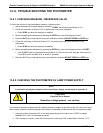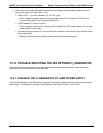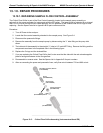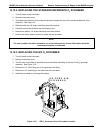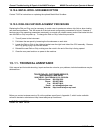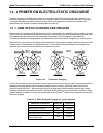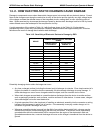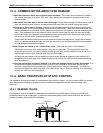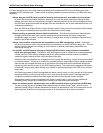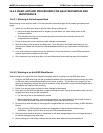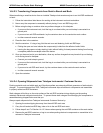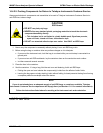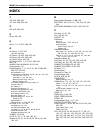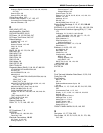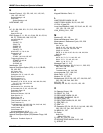
347BA Primer on Electro-Static Discharge M400E Ozone Analyzer Operator’s Manual
For technicians that work in the field, special lightweight and portable anti-ESD kits are available from most
suppliers of ESD protection gear. These include everything needed to create a temporary anti-ESD work area
anywhere.
Always wear an Anti-ESD wrist strap when working on the electronic assemblies of your analyzer.
An anti-ESD wrist strap keeps the person wearing it at or near the same potential as other grounded
objects in the work area and allows static charges to dissipate before they can build to dangerous levels.
Anti-ESD wrist straps terminated with alligator clips are available for use in work areas where there is no
available grounded plug.
Also, anti-ESD wrist straps include a current limiting resistor (usually around one meg-ohm) that protects
you should you accidentally short yourself to the instrument’s power supply.
Simply touching a grounded piece of metal is insufficient. While this may temporarily bleed off static
charges present at the time, once you stop touching the grounded metal new static charges will
immediately begin to re-build. In some conditions, a charge large enough to damage a component can
rebuild in just a few seconds.
Always store sensitive components and assemblies in anti-ESD storage bags or bins: Even when
you are not working on them, store all devices and assemblies in a closed anti-Static bag or bin. This will
prevent induced charges from building up on the device or assembly and nearby static fields from
discharging through it.
Use metallic anti-ESD bags for storing and shipping ESD sensitive components and assemblies
rather than pink-poly bags.
The famous, pink-poly bags are made of a plastic that is impregnated with
a liquid (similar to liquid laundry detergent) which very slowly sweats onto the surface of the plastic
creating a slightly conductive layer over the surface of the bag.
While this layer may equalizes any charges that occur across the whole bag, it does not prevent the build
up of static charges. If laying on a conductive, grounded surface, these bags will allow charges to bleed
away but the very charges that build up on the surface of the bag itself can be transferred through the
bag by induction onto the circuits of your ESD sensitive device. Also, the liquid impregnating the plastic
is eventually used up after which the bag is as useless for preventing damage from ESD as any ordinary
plastic bag.
Anti-Static bags made of plastic impregnated with metal (usually silvery in color) provide all of the charge
equalizing abilities of the pink-poly bags but also, when properly sealed, create a Faraday cage that
completely isolates the contents from discharges and the inductive transfer of static charges.
Storage bins made of plastic impregnated with carbon (usually black in color) are also excellent at
dissipating static charges and isolating their contents from field effects and discharges.
Never use ordinary plastic adhesive tape near an ESD sensitive device or to close an anti-ESD bag.
The act of pulling a piece of standard plastic adhesive tape, such as Scotch
®
tape, from its roll will
generate a static charge of several thousand or even tens of thousands of volts on the tape itself and an
associated field effect that can discharge through or be induced upon items up to a foot away.
262 04315 Rev. C1



